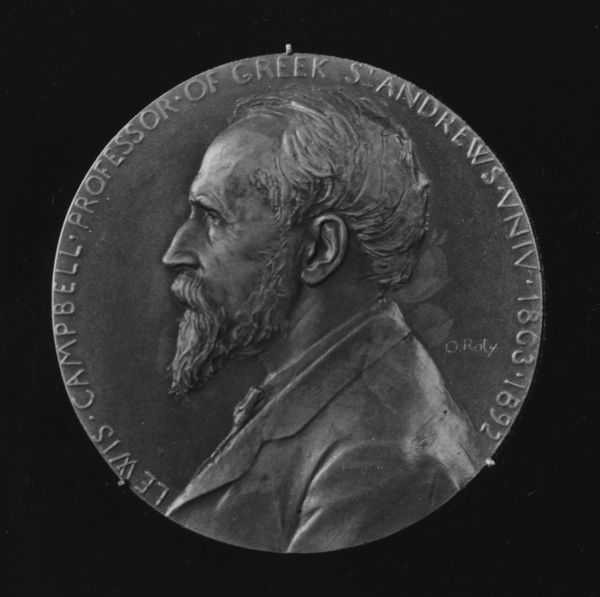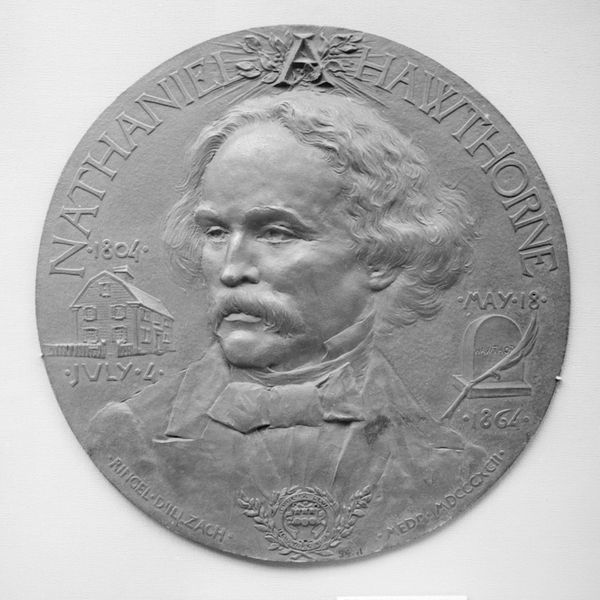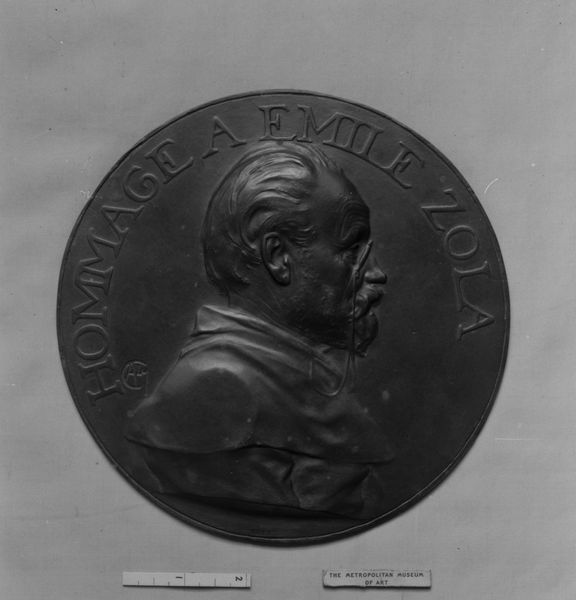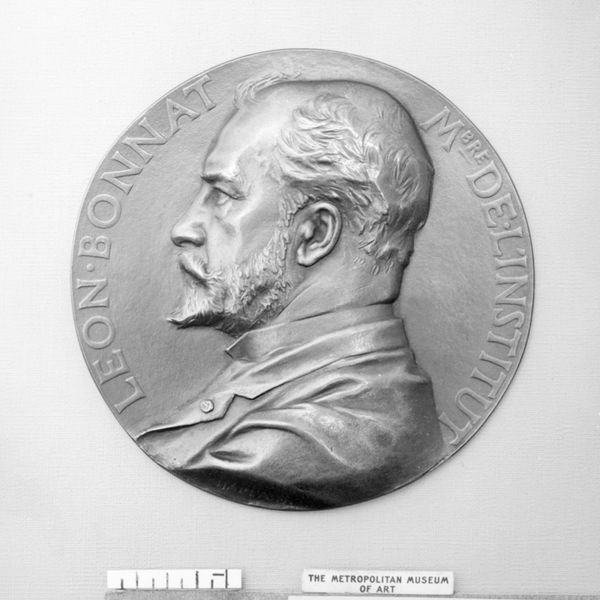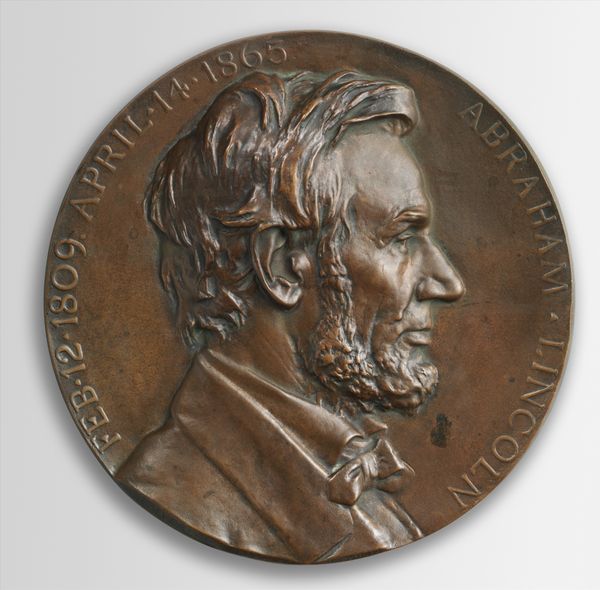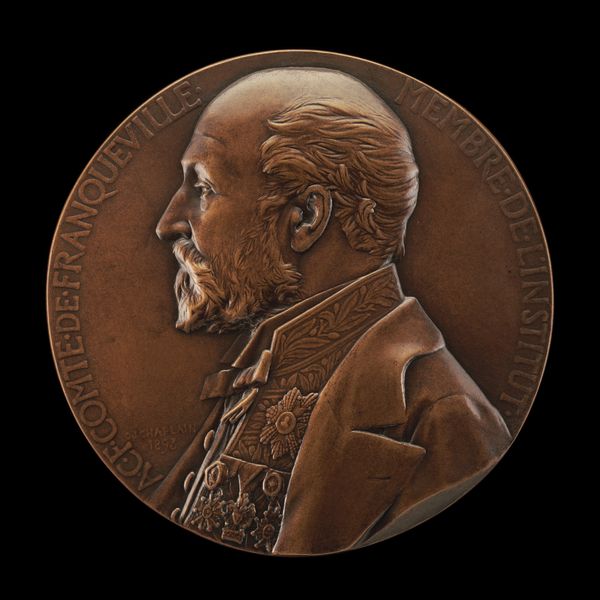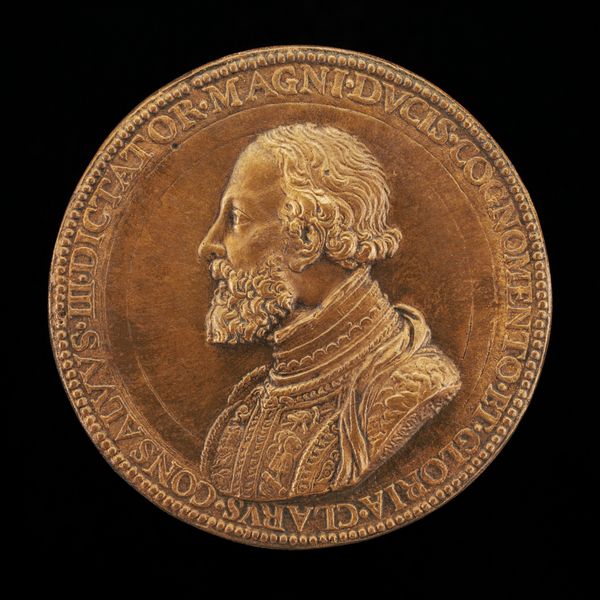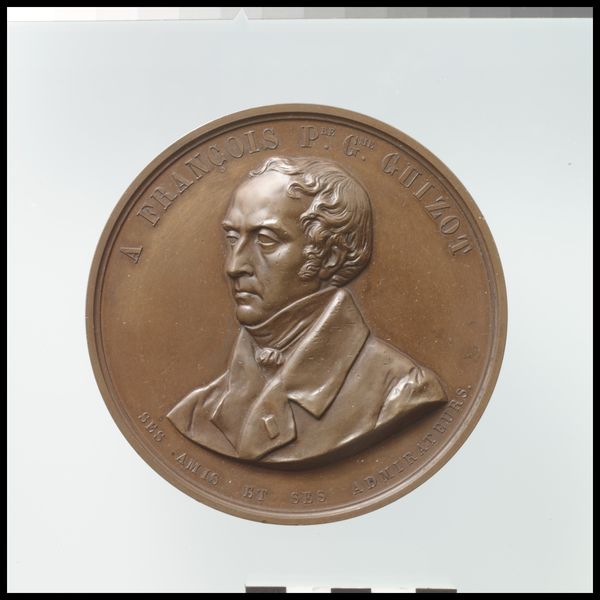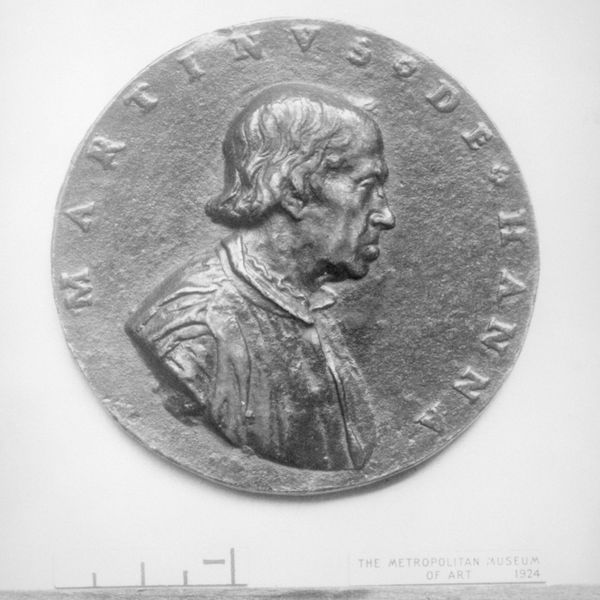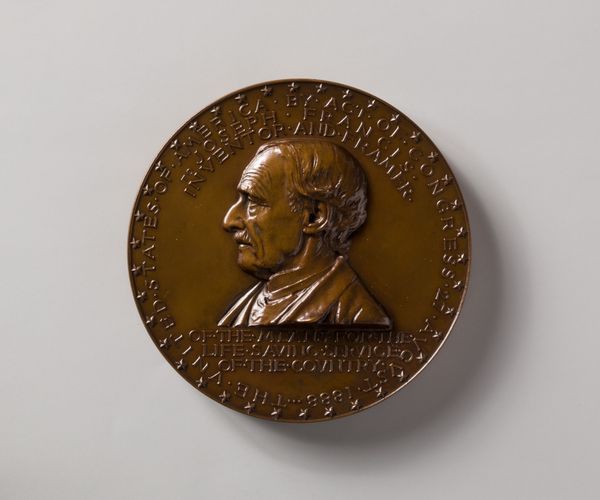
relief, bronze, sculpture
#
portrait
#
medal
#
relief
#
bronze
#
sculpture
#
decorative-art
Dimensions: Diameter: 2 11/16 in. (68 mm)
Copyright: Public Domain
Curator: There's something very classic and dignified about this bronze relief. The muted tones contribute to its sense of enduring legacy. Editor: Indeed. This piece, crafted around 1900 by Louis-Oscar Roty, portrays Abram Stevens Hewitt, a prominent figure of his time. Hewitt was a U.S. Representative, a mayor of New York City, and importantly, a major benefactor and conservator of public works, as the inscription on the medal proudly declares: “Benefactor et Rei Publicae Conservator.” The medal itself speaks to Hewitt's status and contributions to the civic life of New York and the nation. Curator: The composition really emphasizes Hewitt's profile, set against the simple background. Note how the texture and the slight variation in depth highlight the contours of his face and the fabric of his suit, giving it a tangible presence. Editor: And beyond just portraiture, this is a celebration of late 19th-century American progress and governance. Hewitt's political positions were often intertwined with the era’s key issues such as industrialization, labor, and economic reform. This medallion serves not just as a memorial, but as a marker of his role in shaping those discourses. It prompts reflections on power, public service, and how historical figures are remembered and celebrated, or perhaps sanitized, through commemorative art. The inscription that states that he’s 78 years of age underscores the lifetime dedicated to public service and Ingenio Svo – ‘his genius’ as per the inscription. Curator: Agreed. It captures a particular vision of leadership and public service which can be viewed through several angles – class, power dynamics, economic impact. What appears as a traditional commemorative portrait, is very subtly making claims about American societal values. The lettering around the edges, the carefully rendered texture… it’s all contributing to that end. Editor: Reflecting on this, it’s intriguing how the artistry captures not only an individual but also the broader sociopolitical fabric of the period. Curator: Absolutely. It's a quiet piece, formally compelling, yet rich with the socio-historical nuances of the Gilded Age.
Comments
No comments
Be the first to comment and join the conversation on the ultimate creative platform.
